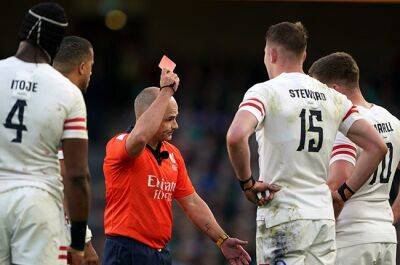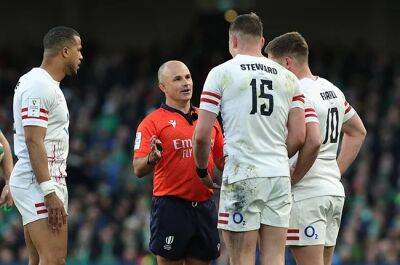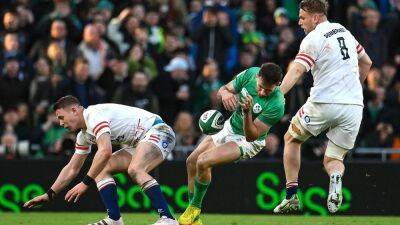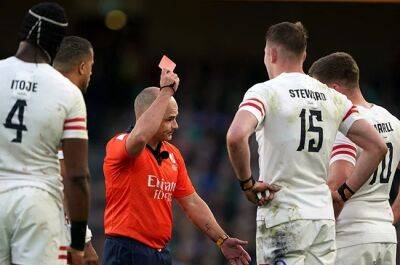Freddie Steward’s red card: why was it shown and what happens now?
Freddie Steward was sent off for a dangerous tackle just before half-time after colliding with Hugo Keenan. The Ireland full-back had just stooped to gather the loose ball which had been knocked forward by Mack Hansen. Steward’s arm was tucked by his side but as he twisted his body – with both feet briefly leaving the floor – to brace for contact, he struck his opponent’s head with his elbow. Keenan was taken off the pitch and, after failing his head injury assessment, did not return.
After pausing play because of a head injury he reviewed the incident with the television match official Marius Jonker. Peyper swiftly identified head contact and determined he and Jonker had to consider if the incident was “foul play”. Announcing that Steward “has to take care”, Peyper evidently did so, highlighting the England full-back’s clear line of sight, how he was upright into contact and how he was turning his shoulder. Peyper then determined that there was a high level of danger, that there was no mitigation and decided a red card was warranted. Steward argued his case, stating he braced for impact and “can’t go anywhere else”. Peyper did not take Steward’s plea into account, citing the “current climate” and, though Steward insisted he had only “milliseconds” to adjust, Peyper was adamant he had time to turn his shoulder and issued the red card.
Because it was both a freak incident as well as the kind of thing that can happen in a dynamic collision sport. That may sound contradictory but ultimately it is not typically the sort of incident for which World Rugby’s high-tackle framework is designed and, when putting theory into practice, anomalies such as this will always occasionally happen and always create debate. Those who argue







